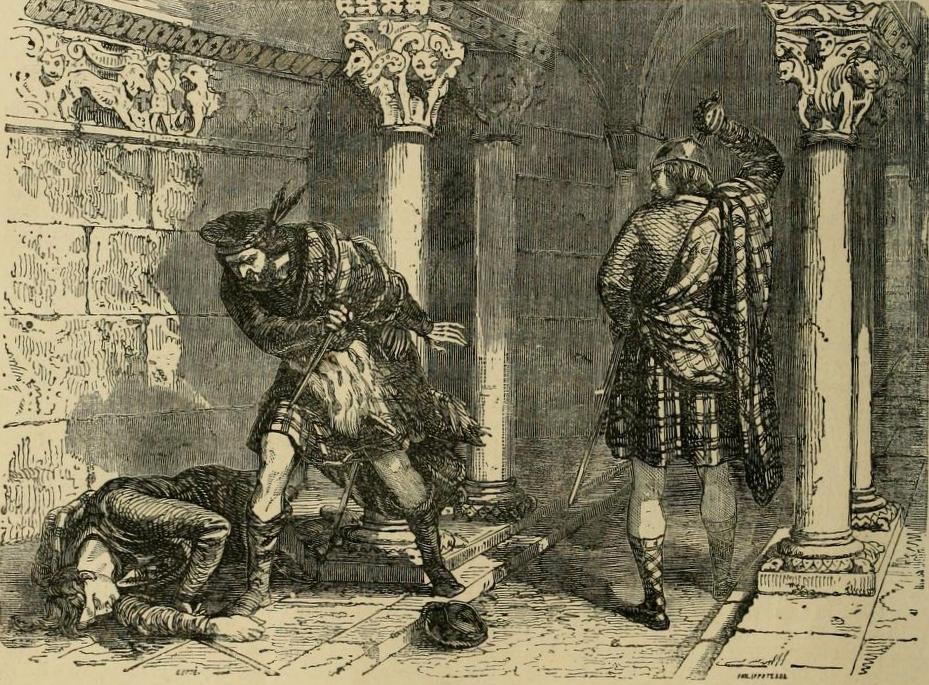|
Joseph Irving
Joseph Irving (1830–1891) was a Scottish journalist, historian and annalist. Life Born at Dumfries on 2 May 1830, he was son of Andrew Irving, a joiner. After being educated at the parish school of Troqueer, over the River Nith from Dumfries, he served an apprenticeship as a printer in the office of the '' Dumfries Standard''. Irving then worked practised as compositor and journalist in Dumfries and Sunderland. He was for a time on the staff of the ''Morning Chronicle'' in London, and in 1854 became editor of the ''Dumbarton Herald''. For some years afterwards he was a bookseller in Dumbarton, and started in 1867 the ''Dumbarton Journal'', which was unsuccessful. In 1860 Irving became a fellow of the Society of Antiquaries of Scotland, and in 1864 an honorary member of the Archæological Society of Glasgow. He disposed of his Dumbarton business in 1869 on the death of his wife, who had been involved with him in his enterprises. After living a few years in Renton, Dumbart ... [...More Info...] [...Related Items...] OR: [Wikipedia] [Google] [Baidu] |
Dumfries
Dumfries ( ; sco, Dumfries; from gd, Dùn Phris ) is a market town and former royal burgh within the Dumfries and Galloway council area of Scotland. It is located near the mouth of the River Nith into the Solway Firth about by road from the Anglo-Scottish border and just away from Cumbria by air. Dumfries is the county town of the historic county of Dumfriesshire. Before becoming King of Scots, Robert the Bruce killed his rival the Red Comyn at Greyfriars Kirk in the town on 10 February 1306. The Young Pretender had his headquarters here during a 3-day sojourn in Dumfries towards the end of 1745. During the Second World War, the bulk of the Norwegian Army during their years in exile in Britain consisted of a brigade in Dumfries. Dumfries is nicknamed ''Queen of the South''. This is also the name of the town's professional football club. People from Dumfries are known colloquially in Scots language as ''Doonhamers''. Toponymy There are a number of theories on the etymo ... [...More Info...] [...Related Items...] OR: [Wikipedia] [Google] [Baidu] |
Troqueer
Troqueer is a former village and a parish in the historic county of Kirkcudbrightshire in Dumfries and Galloway on the west side of the River Nith. The eastern-side was merged with Dumfries to the east in 1929, and today eastern Troqueer is a suburb of Dumfries. Location Troqueer lies on the west side of the Nith, and was originally in Kirkcudbrightshire. The parish has an area of including the former burgh of Maxwelltown in the northeastern portion. It is about from north to south and from east to west, and is bordered on the east by the Nith. An 1846 account said the parish included some woodland and plantations, but was mainly arable, meadow, and pasture. It went on: "The surface is intersected by three nearly equidistant and parallel ranges of heights, the first of which, rising gradually from the river, has been long in a high state of cultivation, and contains several nursery grounds and gardens of great fertility. The valley between it and the second ridge is also frui ... [...More Info...] [...Related Items...] OR: [Wikipedia] [Google] [Baidu] |
River Nith
The River Nith ( gd, Abhainn Nid; Common Brittonic: ''Nowios'') is a river in south-west Scotland. The Nith rises in the Carsphairn hills of East Ayrshire, more precisely between Prickeny Hill and Enoch Hill, east of Dalmellington. For the majority of its course it flows in a south-easterly direction through Dumfries and Galloway and then into the Solway Firth at Airds Point. The territory through which the river flows is called Nithsdale (historically known as "Stranit" from gd, Strath Nid, "valley of the Nith"). Length For estuaries the principle followed is that the river should be visible at all times. The measurement therefore follows the centre of the river at low tide and the mouth of the river is assumed to be at the coastal high tide mark. In Scotland this does not generally make a significant difference, except for rivers draining into shallow sloping sands of the Irish Sea and Solway Firth, notably the Nith. At low tide, the sea recedes to such an extent that th ... [...More Info...] [...Related Items...] OR: [Wikipedia] [Google] [Baidu] |
Dumfries Standard
Dumfries ( ; sco, Dumfries; from gd, Dùn Phris ) is a market town and former royal burgh within the Dumfries and Galloway council area of Scotland. It is located near the mouth of the River Nith into the Solway Firth about by road from the Anglo-Scottish border and just away from Cumbria by air. Dumfries is the county town of the historic county of Dumfriesshire. Before becoming King of Scots, Robert the Bruce killed his rival the Red Comyn at Greyfriars Kirk in the town on 10 February 1306. The Young Pretender had his headquarters here during a 3-day sojourn in Dumfries towards the end of 1745. During the Second World War, the bulk of the Norwegian Army during their years in exile in Britain consisted of a brigade in Dumfries. Dumfries is nicknamed ''Queen of the South''. This is also the name of the town's professional football club. People from Dumfries are known colloquially in Scots language as ''Doonhamers''. Toponymy There are a number of theories on the ety ... [...More Info...] [...Related Items...] OR: [Wikipedia] [Google] [Baidu] |


